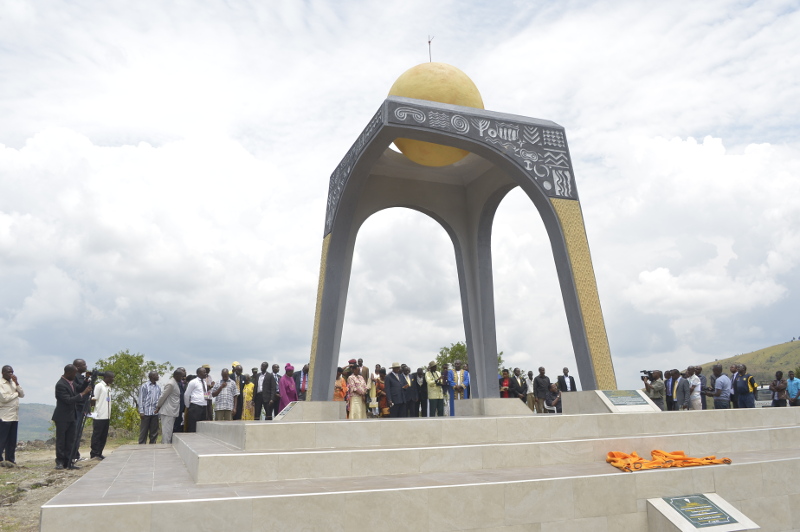The Biharwe monument in Mbarara was erected on Biharwe Hill in commemoration of the “Biharwe Eclipse” which was dated by astronomers and historians to have taken place in the year 1520 AD.
As the only scientifically dated event in the early history of the Great Lakes Region, the eclipse, which was acknowledged in legends of Bunyoro, Buganda and Nkole, became the key benchmark that was used by historians to determine the royal genealogies of those kingdoms.

The three pillars of this monument represent the three kings who were contemporaries at the time, namely Nakibinge of Buganda, Olimi I Rwitamahanga of Bunyoro, and Ntare I Nyabugarobwera of Nkole.
Olimi I Rwitamahanga Kalimbi Rukidi was the 5th Omukama (King) of the Babito dynasty and the most martial ruler of Bunyoro of the 16th century.
He invaded Buganda, Nkole, Mpororo and Rwanda and plundered cattle from those kingdoms. Nkole lost most of its cattle herds due to these constant raids and suffered severe famine called Eijuga Nyonza where wild berries were used as dowry for brides.
It was on Olimi’s return journey after raiding cattle from Rwanda and Mpororo that an eclipse appeared when the raiders had reached Biharwe. The eclipse generated fear and superstition, forcing the King and his warriors to flee in disarray, leaving all cattle behind.
According to the legend, the cows that were abandoned at Biharwe were named by people “Empenda ya Munoni” and “Enduga Mwiguru” (cows that came from heaven). After that incident, the people of Nkole were able to own cattle again.
Visit the Biharwe monument in Mbarara near the Igongo Cultural Center and Hotel. Contact us via info@mbararatours.com to incorporate Biharwe tour in your Uganda Safari tour. Speak to our safari expert on +256701367970.

